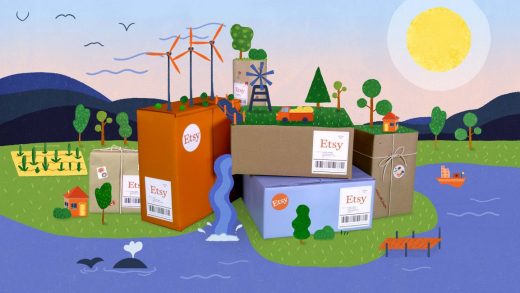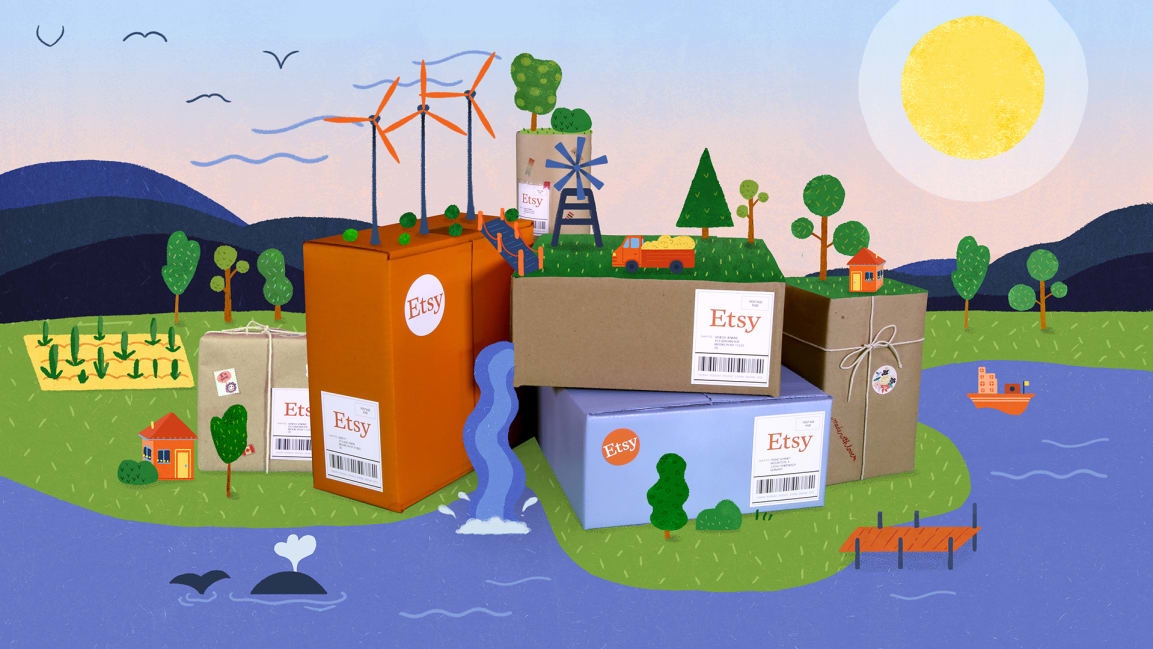Etsy just became the first global e-commerce company to offset all of its shipping emissions
Etsy’s headquarters in Brooklyn has solar panels on the roof, and in 2018 the company partnered with Apple and two other companies to help build new wind and solar farms so that its operations could be fully powered by renewable energy. It migrated its data storage to Google’s cloud, which also runs on renewable power. Its office is zero waste. The company has a program to help its sellers get solar panels at a discount. But the biggest part of the company’s carbon footprint–98%–comes from shipping packages.
Today, Etsy became the first global e-commerce company to offset all of its emissions from shipping. Working with 3Degrees, a company that helps businesses address climate change, it will help protect a forest in Minnesota, build a wind and solar farm in India, and fund the development of a more sustainable method of making car parts. In total, the projects help reduce or capture the same amount of emissions created when Etsy’s sellers ship handmade jewelry or vintage furniture to customers.
“We continue to set targets to use less energy every year,” says Josh Silverman, CEO of Etsy. “But while we are doing that, we don’t need to wait for electric trucks and electric planes. We can get going on offsetting the carbon that is a result of our marketplace immediately.”
Amazon recently announced Shipment Zero, a plan to eventually reach net zero emissions from shipping. It aims for half of its shipments to reach that goal by 2030, in part by making use of electric vehicles. Etsy also plans to work with vendors to push for a shift to more sustainable transportation, but argues that it makes sense to address emissions earlier.
Initially, Silverman thought that the company might offer offsets as an option on the checkout page. But he learned that offsets would cost less than a penny per package. “Why would you ever make someone tick a box or not for something that’s less than a penny?” he says. “That’s ridiculous. It adds more friction than it’s worth.”
The company also learned in its research that only 10% to 20% of customers actually choose to pay for offsets. If the choice was left solely up to customers, “we would never get to a marketplace where we have full carbon neutrality,” says Chelsea Mozen, Etsy’s sustainability lead. “It was really important for us to take full responsibility and be able to say that footprint was completely neutralized.”
On February 28, the company plans to pay to offset the carbon footprint from all e-commerce in the U.S., including Amazon, eBay, and Overstock, for one day. It’s an attempt to demonstrate how easily all companies could be doing the same thing. “There’s a lot of projects out there waiting to be funded,” says Silverman. “Right now, the supply of offsets is solid. So it means that this is an affordable path forward. I think this problem can feel so intractable that people throw up their hands. The result is apathy, when in fact there’s a very viable path forward right in front of us that allows us to take action today.”
(39)



